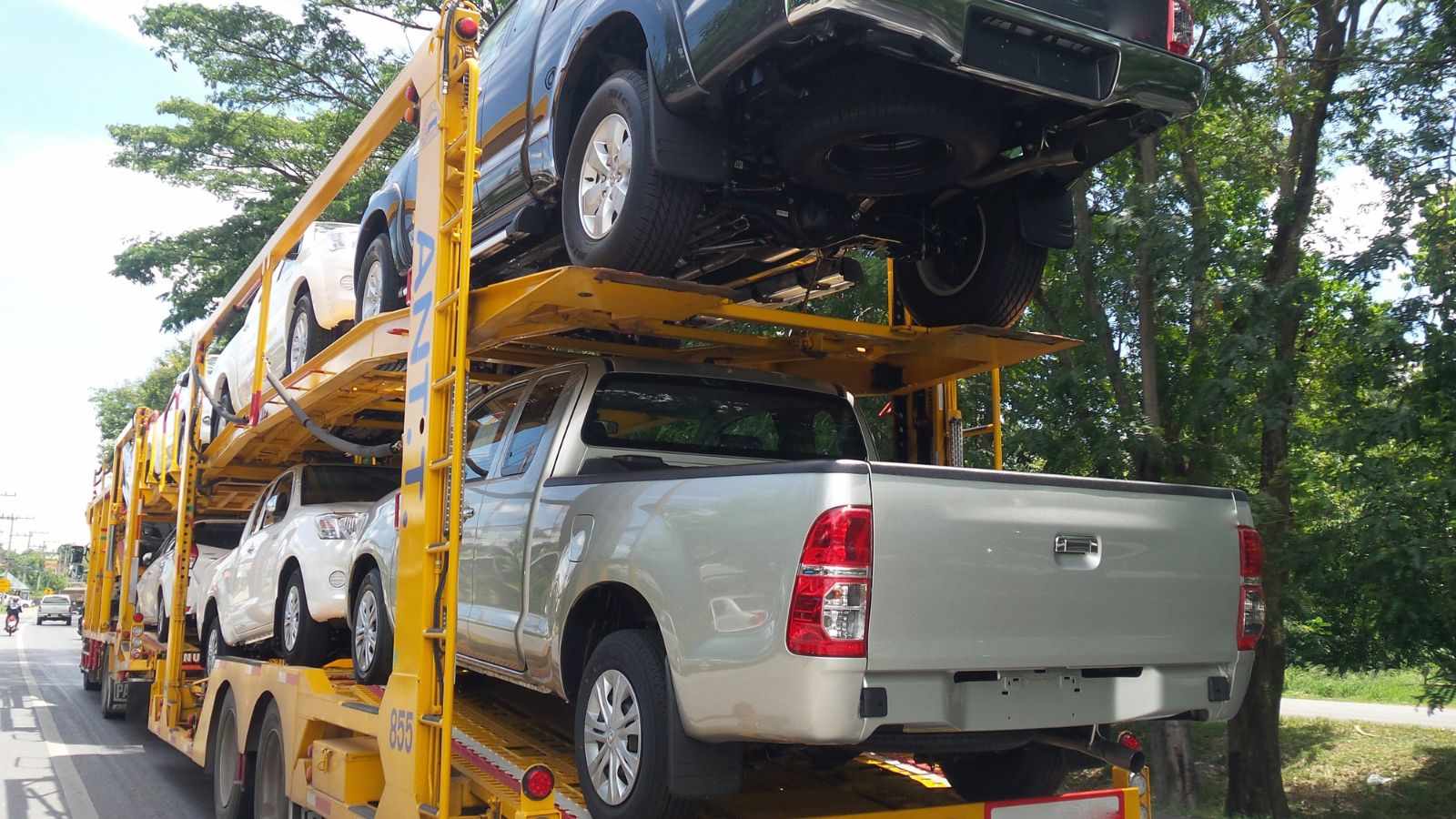If you’re considering using your tow vehicle to transport your cargo, it may be worthwhile to familiarize yourself with proper towing procedures. Successfully towing a trailer, car, or any load necessitates being prompt, alert, and attentive. Although it may appear daunting or stressful, it becomes effortless once you prepare well.
In this article, we will first explain some terminologies about towing trailers, introduce the equipment used in the towing procedure, and provide some safety tips to help drivers protect their vehicles on the road.
Towing terminology and equipment
One can only learn how to safely tow and drive a towing vehicle by acquiring some commonly used acronyms and expressions related to safe towing regulations. These expressions refer to the towing vehicle and trailer, and we will explain related terms separately.
Trailers terminology
- Unloaded Vehicle Weight (UVW) refers to the weight of an empty trailer
- Cargo Capacity refers to the weight limit a trailer can carry, including any items loaded inside
- Gross Vehicle Weight Rating (GVWR) indicates the maximum amount a trailer can safely weigh
- Tongue Weight or Hitch Weight indicates the weight a trailer puts on the towing vehicle, which, depending on the kind of trailer, could be 10 to 20% of a GVWR
Note: If we add up the cargo capacity and unloaded vehicle weight, we will get the GVWR for a trailer.
Towing vehicles terminology
- Empty Weight is the weight of an empty towing vehicle
- Cargo Capacity, again, is the weight a towing vehicle can carry, like passengers, fluids, cargo, etc.
- GVWR also refers to the maximum amount a towing vehicle can safely weigh. It is calculated the same way by adding up the empty weight and the cargo capacity
- GCVWR, which stands for Gross Combined Vehicle Weight Rating, is the overall weight of a towing vehicle combined with the maximum weight of the towed trailer
- Towing Capacity is the max weight limit of a trailer a towing vehicle can tow
Towing Equipment
People must know about towing equipment and its functions to tow a trailer to a towing vehicle properly. We will start by introducing the parts of a trailer and how they generally work during the towing process.
- The Tongue is part of the trailer connected to the tow vehicle’s hitch, which helps support and balance the trailer during the towing process
- The Coupler is attached to the tongue and is a safe connection between the tow vehicle and the trailer
- The Hitch secures the trailer by providing resistance against forward motion when attached to a tow vehicle
- Locking Pins help ensure everything is secured during transportation by preventing unwanted movement between parts of the trailer assembly
A trailer has a tongue that stretches out to connect to the towing vehicle and a hitch that distributes weight when the tongue is pressed down. At the end of the tongue, a coupler attaches to the trailer’s hitch receiver, which should fit the ball mount of the towing vehicle. Finally, the hitch is secured to the ball mount using locking pins.
Safety chains keep the trailer connected to the towing vehicle if it detaches from the coupler. Remember that safety chains should be crossed under the coupler to keep the tongue from getting disconnected. In addition, the chains should match the combined weight of the trailer and the towing vehicle.
Towing safety tips
Now that we have introduced the terminology related to towing vehicles and equipment used for correct and safe towing, everyone should still know some tips about towing and driving a towing vehicle.
The first thing to do is check the vehicle’s towing capacity, typically found in the owner’s manual. Remember that it is important to review all the instructions and safety tips specific to the towing vehicle before towing anything to it.
Now, load the trailer properly to ensure it is well balanced and avoid overloading or towing above the vehicle’s capacity, as it could lead to damaging the vehicle, towed trailer, and cargo.
Loads must be secured tightly and properly distributed to avoid concentrating the weight in one place, making driving the vehicle dangerous. Avoid putting items too far toward the front or back of the trailer. Instead, keep them distributed on both sides of the trailer and over the axles. Remember to check for the vehicle’s condition before towing anything to it.
Check for tires’ condition and pressure as well as for blind spots. Readjust mirrors by installing extension mirrors to see down the trailer’s top side. Most importantly, ensure that brake lights and turn signals are working properly, so drivers can see the trailer and know when you want to turn, slow down, or stop.
It goes without saying that towing vehicle drivers should drive much slower than they normally do, watch out for obstacles, and scan the road before turning. It is recommended to perform a driving test in a location with plenty of space to practice driving the vehicle with its towed cargo before driving it on a real road.
If you are planning to tow another vehicle to your towing vehicle, you can avoid all the headaches and unnecessary overwhelming hassle by hiring a professional auto transport company to handle the task safely. Tempus Logix boasts years of experience and only works with qualified veteran drivers ready to move your vehicle from anywhere across the States.
Finally, towing a vehicle, a trailer, a boat, or anything to your vehicle can initially seem daunting. However, the process will go smoother and easier after preparing the right equipment, consulting an expert, and using the correct techniques.






